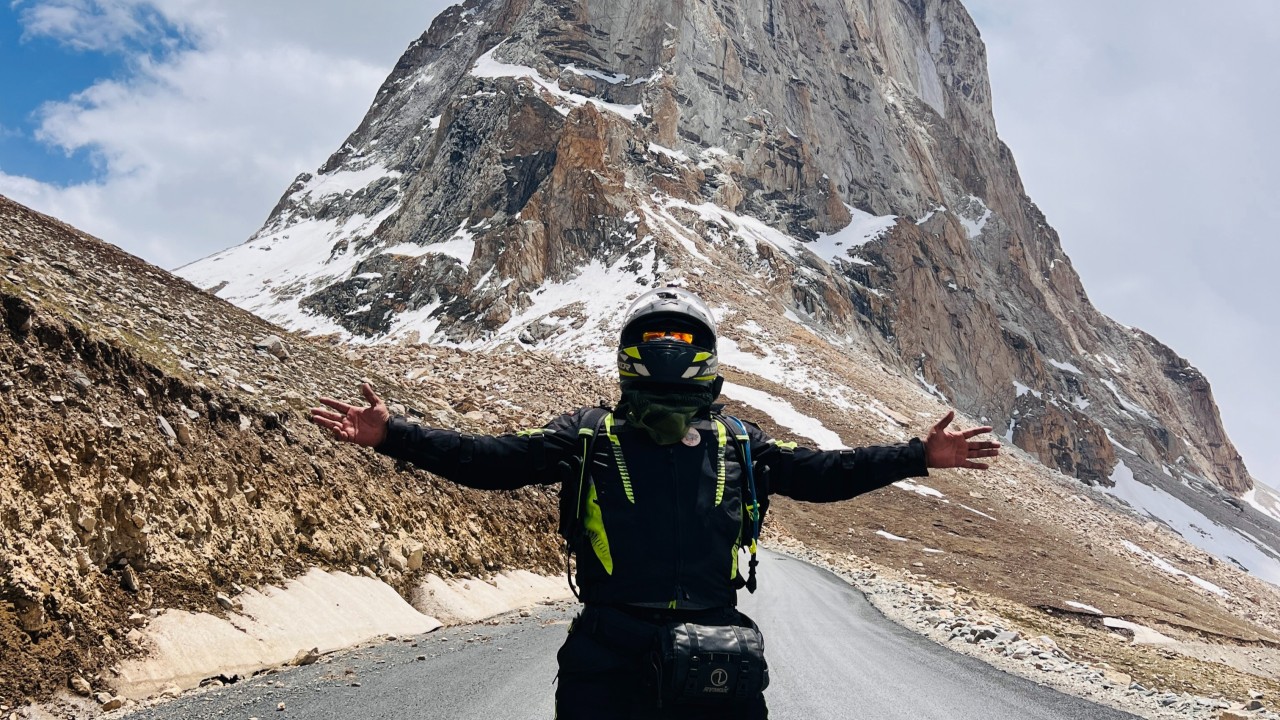
Lessons from Ladakh
Introduction
GK & Current Affairs for CLAT | CLAT Current Affairs 2026
Powered by CLAT Gurukul – Best online coaching for CLAT
The recent unrest in Ladakh, marked by the arrest of Sonam Wangchuk, a prominent climate activist and education reformer, has drawn national attention. His arrest and the subsequent protests in Leh have reignited debates about governance, representation, and dialogue in India’s most remote Union Territory.
The situation highlights the growing disconnect between local aspirations and central administration, especially after Ladakh was carved out of Jammu and Kashmir in 2019 and made a Union Territory without legislative powers. The crisis serves as a reminder that protests and dialogue are integral parts of democracy — and when ignored, they can escalate into unrest.
This article, written by Neerja Chowdhury for The Indian Express, examines why the government must engage in consistent and empathetic communication with protest movements instead of adopting a heavy-handed approach.
For aspirants preparing with the best online coaching for CLAT and tracking CLAT Current Affairs 2026, this development is a crucial case study of federalism, democratic dialogue, and the balance between dissent and governance.
Why in News
- The arrest of Sonam Wangchuk in Ladakh sparked mass protests led mainly by the youth.
- The protests were initially peaceful but turned violent in Leh, resulting in casualties.
- The unrest stems from unresolved demands for statehood and Sixth Schedule status for Ladakh.
- Talks between the Centre, the Apex Body of Leh (ABL), and the Kargil Democratic Alliance (KDA) have been stalled.
- The protest movement has brought to light issues of governance, ecological fragility, unemployment, and representation in Ladakh.
- The columnist argues that continuous dialogue — not suppression — is essential to prevent alienation and uphold India’s democratic ethos.
Background: Understanding the Ladakh Issue
- Formation of Ladakh UT (2019):
- After the abrogation of Article 370, Ladakh was carved out of the erstwhile state of Jammu & Kashmir and made a Union Territory without a legislature.
- Initially celebrated, the decision soon led to discontent as locals realized they had lost representation and land safeguards previously enjoyed under J&K.
- Demands of the Region:
- Statehood for Ladakh.
- Inclusion under the Sixth Schedule of the Constitution (for tribal and regional autonomy).
- Environmental protection and job opportunities for locals.
- Representation through elected bodies.
- Apex Bodies in Dialogue:
- Apex Body, Leh (ABL) represents Buddhist-majority Leh.
- Kargil Democratic Alliance (KDA) represents the Muslim-majority Kargil region.
- Both bodies have been demanding constitutional and administrative safeguards.
- Stalled Negotiations:
- The Centre’s talks with ABL and KDA have halted, leading to growing frustration.
- Locals claim their issues are being ignored and their elected bodies are “virtually defunct.”
Key Issues Triggering the Protests
- Job Crisis:
- High unemployment among Ladakhi youth has been a persistent concern.
- Promised government posts and local recruitment drives have not materialized.
- Loss of Autonomy:
- After UT formation, Ladakh no longer has a Legislative Assembly or powers to make laws.
- All decisions are centralized through the Lieutenant Governor’s office.
- Environmental Concerns:
- Rapid and unregulated development threatens Ladakh’s fragile Himalayan ecosystem.
- Wangchuk, known for his climate activism, had long warned of ecological risks.
- Cultural Identity and Representation:
- Ladakhis fear the erosion of their Buddhist and tribal identity due to demographic and political shifts.
Sonam Wangchuk’s Role
- Sonam Wangchuk, inspired by non-violent Gandhian methods, has long advocated for peaceful civic resistance.
- His activism blends climate awareness, local empowerment, and education reform.
- He emphasized:
“We must fight for our rights and dreams only through non-violence.”
- However, after his arrest, youth-led protests in Leh escalated, reflecting pent-up frustration among locals.
- Wangchuk’s movement symbolizes civil resistance rooted in dialogue, echoing India’s democratic traditions.
Key Themes Highlighted by Neerja Chowdhury
- Dialogue Over Suppression
- Governments must engage with dissenting voices rather than silence them.
- Dialogue not only resolves grievances but also strengthens democratic trust.
- The Ladakh situation is a reminder that protests are not anti-national; they are a democratic feedback mechanism.
- Protest as a Democratic Right
- Protest is an inalienable part of democracy.
- It is a form of public feedback when institutional mechanisms fail.
- Governments should treat protests as opportunities to address grievances before they escalate.
- Risks of Overreaction
- Heavy policing or violent crackdowns can backfire, especially in border-sensitive regions like Ladakh.
- The author warns that using force without dialogue can deepen alienation and instability.
- Importance of Non-Violence
- Non-violence remains the most powerful moral weapon in political discourse.
- India’s democracy has historically thrived when movements were peaceful and negotiated, as seen in the formation of Jharkhand, Chhattisgarh, and Uttarakhand.
Protests Across India: A Broader Pattern
The author contextualizes Ladakh’s unrest within a national pattern of youth-led protests:
- Goa:
- Youth protested against the killing of a social activist, allegedly by politically connected individuals.
- Uttarakhand:
- Protests erupted over paper leaks in the Subordinate Services Selection Commission, exposing job-related corruption.
- Tamil Nadu:
- The tragic stampede at actor-turned-politician Vijay’s rally reflected frustration with traditional politics.
These protests, while local in cause, reveal a national crisis of trust between citizens and institutions.
Youth anger stems from joblessness, corruption, and a sense of voicelessness in governance.
The Deeper Message: Why Talking Matters
- Talking is governing. Silence breeds alienation; engagement restores faith.
- Governments that refuse dialogue risk transforming legitimate dissent into mass resistance.
- Dialogue fosters accountability, trust, and social cohesion.
- As the columnist notes, “Protests handled with care yield results; those suppressed breed resentment.”
Lessons for Governance
- Institutionalize Dialogue:
Regular consultative platforms between governments and civil society can prevent conflicts. - Strengthen Local Governance:
Empowering Panchayats and Autonomous Hill Councils can restore people’s voice in governance. - Recognize Non-Violent Movements:
Instead of branding movements as “anti-national,” governments should recognize them as expressions of participation. - Policy Responsiveness:
Addressing unemployment, education, and corruption issues promptly can prevent larger crises. - Learning from History:
Movements like Narmada Bachao Andolan and Chipko were peacefully negotiated, yielding positive environmental and social outcomes.
Protests, Past and Future: A Comparative Insight
Historical Movements | Nature of Protest | Government Response | Outcome |
JP Movement (1974) | Non-violent, student-led | Repression, later dialogue | Led to democratic reform |
Anti-corruption protests (2011) | Civil, media-supported | Led to Lokpal Act | Spawned new political forces |
Ladakh Movement (2025) | Non-violent turned reactive | Initial suppression | Awaiting government engagement |
The analysis reveals a consistent truth:
When the state engages in dialogue, dissent transforms into reform. When it doesn’t, discontent turns into division.
Broader Regional Implications
- Strategic Sensitivity:
Ladakh shares borders with China and Pakistan, making internal stability crucial for national security. - Geopolitical Stakes:
Continued unrest may affect India’s border management and diplomatic posture in the region. - Cultural Unity:
A fair and empathetic handling of the Ladakh issue will strengthen India’s pluralistic federalism.
Conclusion
The Ladakh protests are not merely about jobs or autonomy — they represent a deeper yearning for recognition and dialogue.
India’s democracy, despite its imperfections, has survived because it allowed voices of dissent to be heard, debated, and integrated into policy.
Neerja Chowdhury’s central argument resonates across time:
“When protests take place, it is necessary to talk — and talk — and talk some more.”
For the best online coaching for CLAT and Current Affairs 2026 preparation, this episode underscores the importance of dialogue as a constitutional and moral principle in India’s governance.
Notes: Explanation of Key Terms
- Sixth Schedule:
A constitutional provision (Articles 244(2) and 275(1)) granting autonomy to tribal regions in Assam, Meghalaya, Mizoram, and Tripura through local councils. - Apex Body, Leh (ABL):
A representative group formed to voice Leh’s political and administrative concerns post-UT formation. - Kargil Democratic Alliance (KDA):
Represents Muslim-majority Kargil, advocating for statehood and constitutional safeguards. - Sonam Wangchuk:
An environmentalist and educationist, known for climate activism and founding the SECMOL (Students’ Educational and Cultural Movement of Ladakh). - Statehood Demand:
A call for restoring legislative powers and greater local autonomy to manage development and ecology. - Non-Violence:
A Gandhian principle emphasizing peaceful resistance as the highest form of civic engagement.
This Blog is Powered by CLAT Gurukul — India’s Leading Law Entrance Prep Platform
At CLAT Gurukul, we believe in empowering future legal minds with the right blend of knowledge, strategy, and mentorship. This blog is a reflection of our commitment to quality content that not only helps aspirants stay updated but also sharpens their conceptual clarity.
Why CLAT Gurukul?
- Personalized Mentorship by Top Legal Educators
- Comprehensive Study Materials & Legal Updates
- Daily Practice Sets, Mocks & Performance Tracking
- Result-Oriented Strategy for CLAT, AILET, and CUET
Whether you’re reading this article to deepen your understanding or to stay ahead in your exam prep — you’re already one step closer with CLAT Gurukul by your side.
Join thousands of successful aspirants who trusted CLAT Gurukul and cracked India’s top law entrance exams.
Visit https://www.youtube.com/@CLATGurukul/shorts to learn more or speak to our experts now!
Note from CLAT Gurukul
At CLAT Gurukul, we are committed to providing free CLAT study material, including CLAT current affairs, legal reasoning practice sets, general knowledge updates, logical reasoning questions, English comprehension exercises, and more — all curated by top mentors.
Our blog section is regularly updated with high-quality CLAT content tailored to match the evolving pattern of the CLAT UG exam. Whether you’re looking for CLAT 2026 current affairs, CLAT legal reasoning passages, or mock practice sets, we have you covered.
We believe in open-access learning and will continue to publish free CLAT preparation resources to help serious aspirants succeed.
Explore more free content under categories like:
Best online coaching for CLAT, CLAT current affairs, CLAT GK updates, CLAT legal updates, CLAT logical reasoning, and CLAT English preparation.
For structured learning, daily mocks, and expert mentorship, visit https://www.youtube.com/@CLATGurukul/shorts — the Best CLAT Coaching in Patna and India’s most trusted platform for CLAT online coaching.
